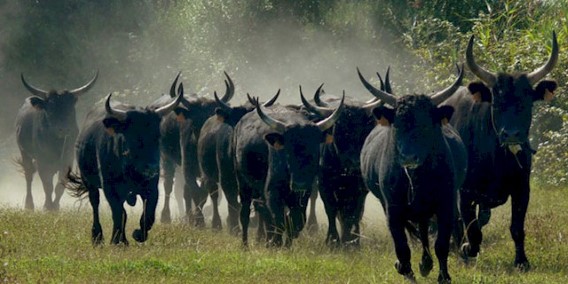Brava (also known as Espagnole Brava and Race de Combat ) cattle
are principally bred for the bull-ring. But they are also used for meat
production.
They were originated from France and raised mainly in the
Camargue, the delta of the Rhone in the southern area. Joseph Yonnet first
introduced the breeding stock of the Iberian fighting bulls to France in 1869,
and there were no further such imports until 1975. A breed society for the
Brava was established in 1920, and a herdbook for the breed was established in
the year of 1996.
The total population of Brava cattle was estimated at 5950
in 2004. But the number were reported to be 3275 in 2014. They are found in Camargue,
Provence-Alpes-Côte d’Azur, Petite Camargue and Occitanie.
They are smaller sized cattle. They are variable in color,
but most often uniformly black. Both bulls and cows usually have horns. Their
horns are large and forward pointing. The horns are creamy grey at the base and
usually dark at the tips. Their mucous membranes are dark. As a smaller sized
animal average body height of the cows is around 115 cm, and around 125 cm for
the bulls. The mature bulls on average weight around 400 kg. And the mature
cows on average weight around 250 kg.
